Structure, Jamming and Rheology
Our group attempts to correlate the microscopic structures and particle-scale dynamics in soft glassy materials with their bulk properties such as their rheology (flow and deformation behaviour). One of the model glassy systems that we study is the synthetic colloidal clay Laponite, which when dispersed in water shows rich phase behaviour that depends on both clay and ionic concentrations. Furthermore, the flow properties of clay suspensions can be tuned by incorporating different additives such as acid and salt, which allows us to explore ways to control the microstructures and yielding behaviours of these materials. Another recent study explored in great detail the effects of dissociative and non-dissociative additives on the glass transition of Laponite suspensions and indicates that non-dissociative additives modify the glassy dynamics by significantly modifying the strength and population of hydrogen bonds in the aqueous medium. More recently, we have started synthesising thermoreversible PNIPAM microgel particles in-house, which allows us to achieve a jamming transition simply by tuning the temperature of the medium. We have performed detailed studies of the non-Gaussian dynamics of aqueous suspensions of aging Laponite and closely-packed PNIPAM particles through extensive evaluations of the higher-order correlation functions characterising their dynamics. We have also investigated the roles of particle stiffness, particle size, and particle size polydispersity on the approach of particulate suspensions towards the kinetically arrested state. We have recently set up a simultaneous rheology and dielectric experiment in our laboratory to correlate properties of dense suspensions over a hierarchy of time scales, from the nanoscopic scale of dipolar fluctuations, all the way up to bulk stress relaxation dynamics. These studies allow us to explore and control the interesting and sometimes non-intuitive properties of jammed colloidal suspensions.
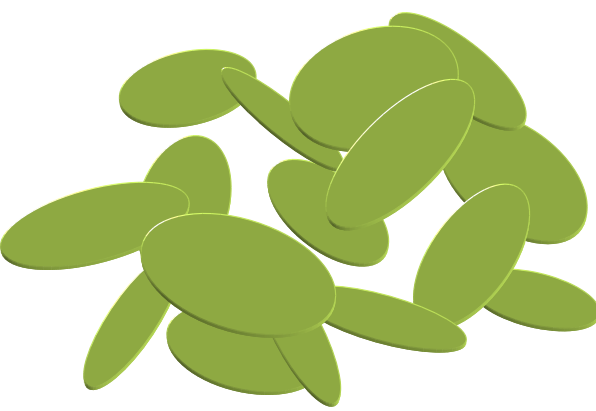
.jpg)
Interfacial instabilities in confined geometries
Finger-like instabilities occur when a less viscous fluid is forced through a confined space filled with a more viscous fluid. Non-Newtonian viscoelastic fluids, such as colloidal suspensions and granular mixtures, display complex flow rheology under shear. In our lab, we use these non-Newtonian fluids to investigate how this complex rheology influences the formation and growth of interfacial instabilities in a quasi two-dimensional radial Hele-Shaw cell. In recent work, we displaced Laponite clay suspensions using miscible and immiscible Newtonian fluids. This study shows that a wide range of interfacial patterns, ranging from fingers to fractures and flowers to jagged patterns, can be obtained by varying the waiting time of the aging clay suspension and the miscibility of the fluid pair. We also introduced a parameter, the areal ratio, which can be used to segregate all the observed patterns in a three-dimensional phase diagram. In another study from our lab, we performed miscible displacements of shear-thickening suspensions of granular cornstarch particles. Unlike traditional research on interfacial instabilities due to fluid-fluid displacements where only one interface is generally studied, we focused on two different interfaces (the inner interface between displacing fluid and cornstarch suspension and the outer interface between cornstarch suspension and atmospheric air) in a single experiment. In addition to the unstable displacement at the inner interface, surprisingly, we also observed the transient withdrawal of the cornstarch suspension when water was injected into the confined geometry at sufficiently high flow rates. This resulted in the formation of reverse fingers at the outer interface. We found that reverse fingers are generated only when the cornstarch suspension goes into a discontinuous shear thickening regime. In an earlier study, we also addressed the elastic instabilities that develop when a shear-thinning cornstarch suspension is displaced by miscible water in a Hele-Shaw geometry.
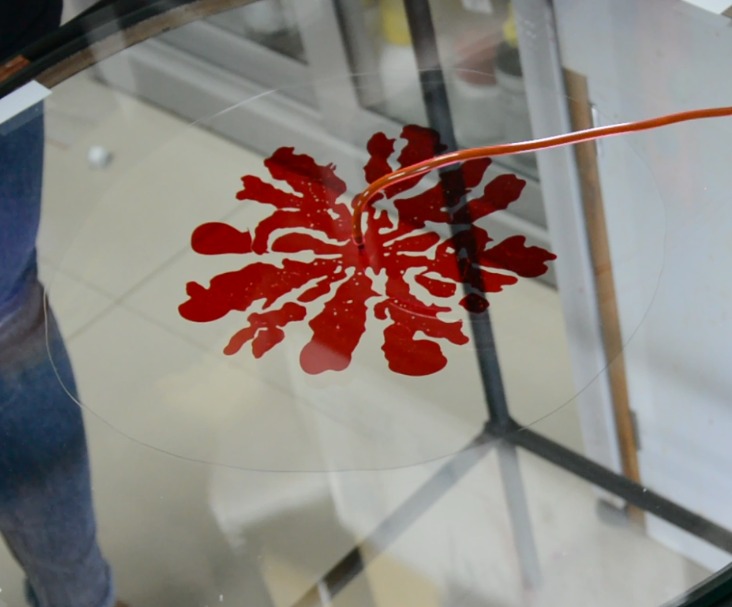
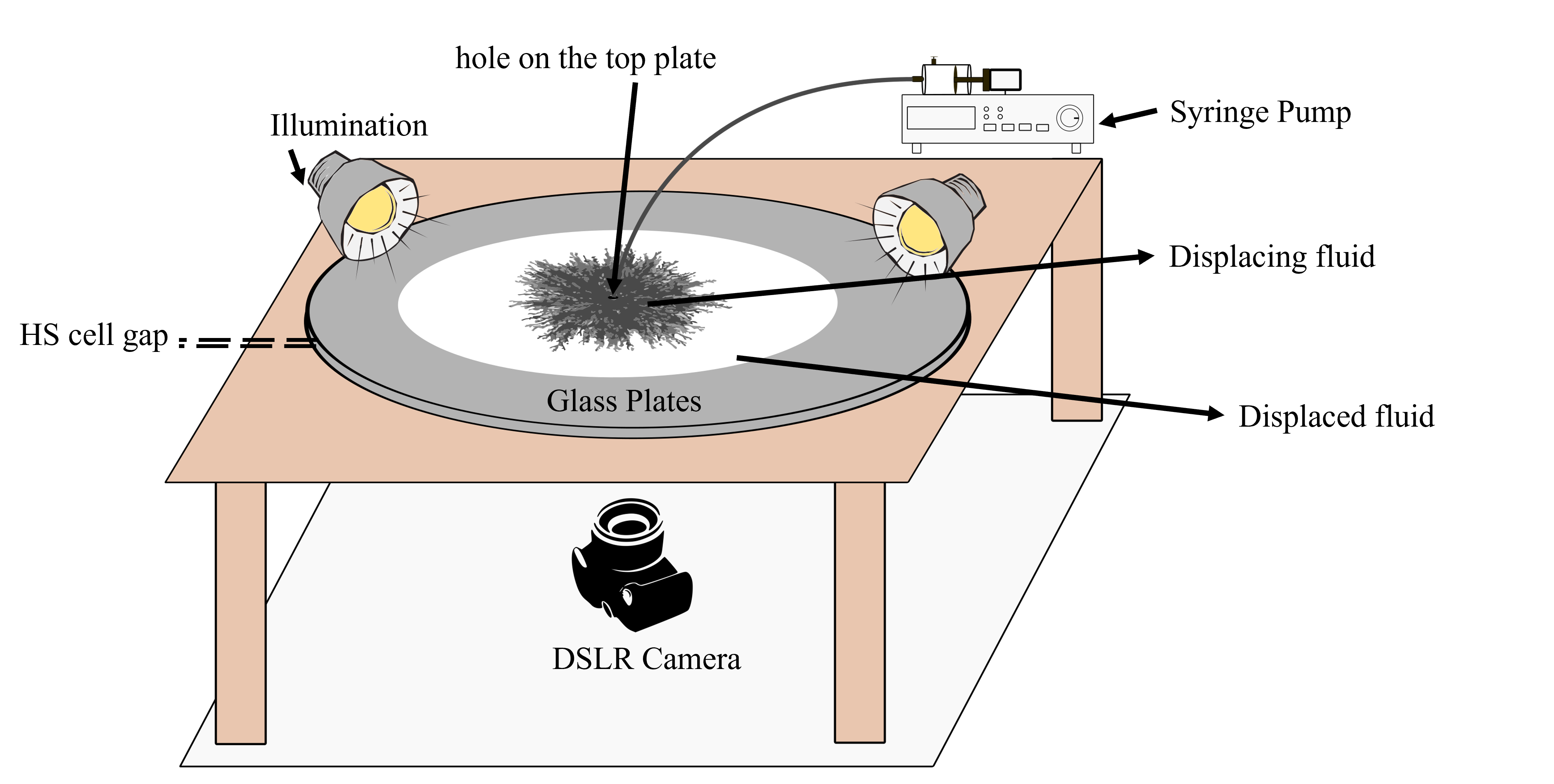
Desiccation cracks and evaporation induced self-assembly
Films of colloidal suspensions crack when allowed to dry. In our lab, we use a model colloidal suspension of Laponite® clay, which shows physical aging as a function of elapsed time. Due to the temporal evolution of interparticle electrostatic interactions, Laponite particles in an aqueous medium self-assemble gradually and spontaneously to form fragile microstructures at a rate that depends on the physicochemical conditions of the sample. We investigated how the onset of desiccation cracks, i.e., the time corresponding to the appearance of the first crack that develops in the evaporating film, changes when the rate of clay aging is systematically changed. We observed that the onset of cracking decreases when the attraction between Laponite particles increases. More elastic samples were seen to crack earlier. We are working on understanding this correlation between Laponite suspension elasticity and crack onset time via a poroelastic model. We have also performed details studies on evaporation-induced self-assembly (the formation of coffee stains) upon drying sessile colloidal droplets of, among other systems, gold nanorod suspensions. Besides studying the dried pattern morphologies under an electron microscope, we have also studied the correlations between the dried patterns and drying kinetics, the role of surfactant, and the effects of nanoparticle shape and size on the drying phenomenon
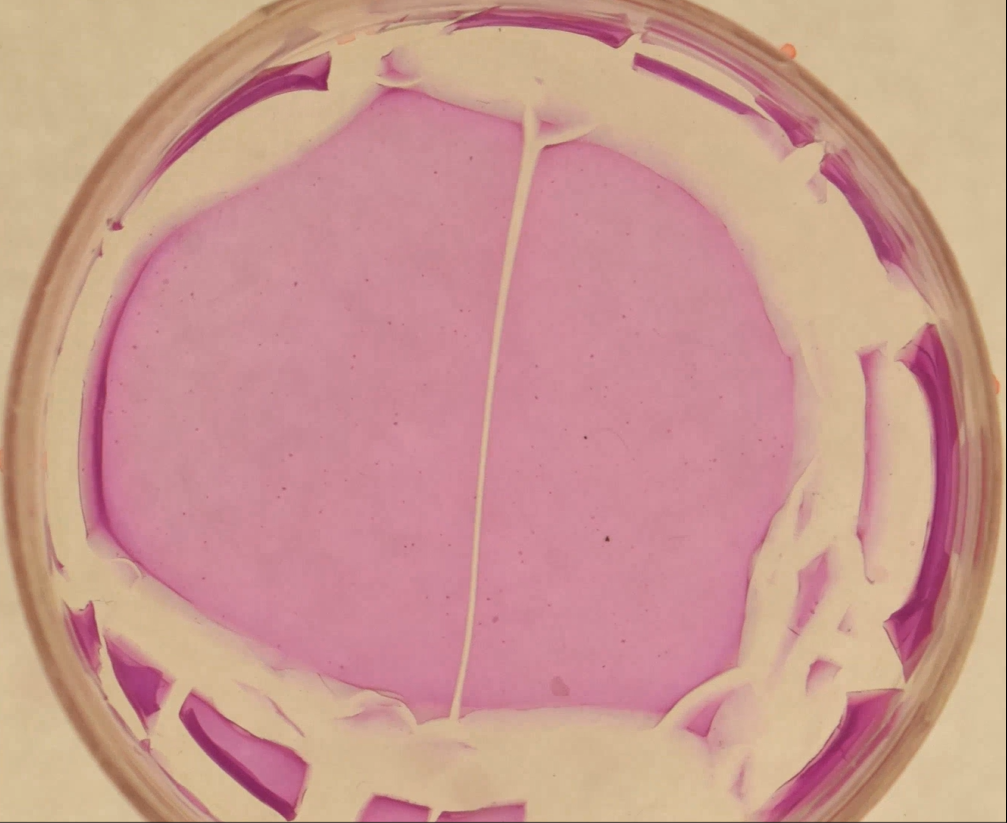
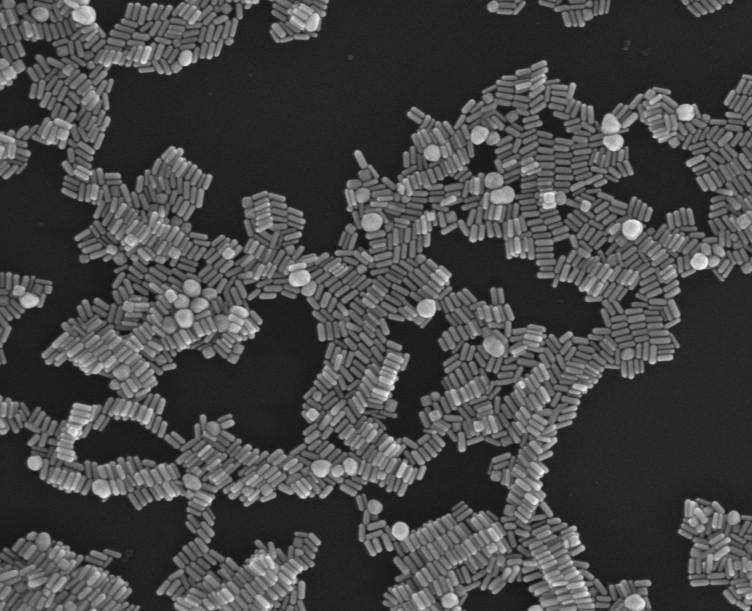
Physics of suspensions driven by external fields
Our research group is interested in studying emergent properties in suspensions that are driven by external fields. Recently, we utilized optical tweezer-based active microrheology to explore the microstructure evolution of colloidal Laponite clay. This allowed us to gain valuable insights into the relationship between the micromechanical moduli and the intricate network patterns that characterise the clay. As individual particles of these colloidal clays are charged, we have also explored the influence of electric fields on the structure-building capabilities of these complex systems. Understanding the interplay between electric fields and microstructure formation provides essential knowledge about the physical properties and stability of these soft materials under diverse conditions.
Our group is also interested in studying the dynamics of Janus particle suspensions, which, when subjected to external fields or fuel gradients, become active and serve as an excellent model system to study active matter. Besides displaying striking out-of-equilibrium responses, active matter consisting of self-propelling particles in large numbers exhibit collective dynamics. Studying active particle dynamics under different confinement conditions or in viscoelastic media allows us to decipher the behaviours of active materials in realistic situations. Our experiments involve studying the dynamics of active Janus particles in dense suspensions and how they affect the surrounding environment.
Furthermore, we strive to understand the non-equilibrium dynamics and collective behaviour of dissipative granular systems that are acted upon by vertical vibrations. Using a 3D printer, we create a large number of granular particles. These granular particles are then excited by a vibrating plate coupled to an electrodynamic shaker which displaces them horizontally. We analyse and study the individual trajectories of all the particles and extract their statistical properties through computations of higher-order dynamical correlation functions. These analyses help us understand their collective behaviours. Our studies provide us ample opportunities to hone our data analysis and programming skills and extract meaningful statistical information from noisy data.
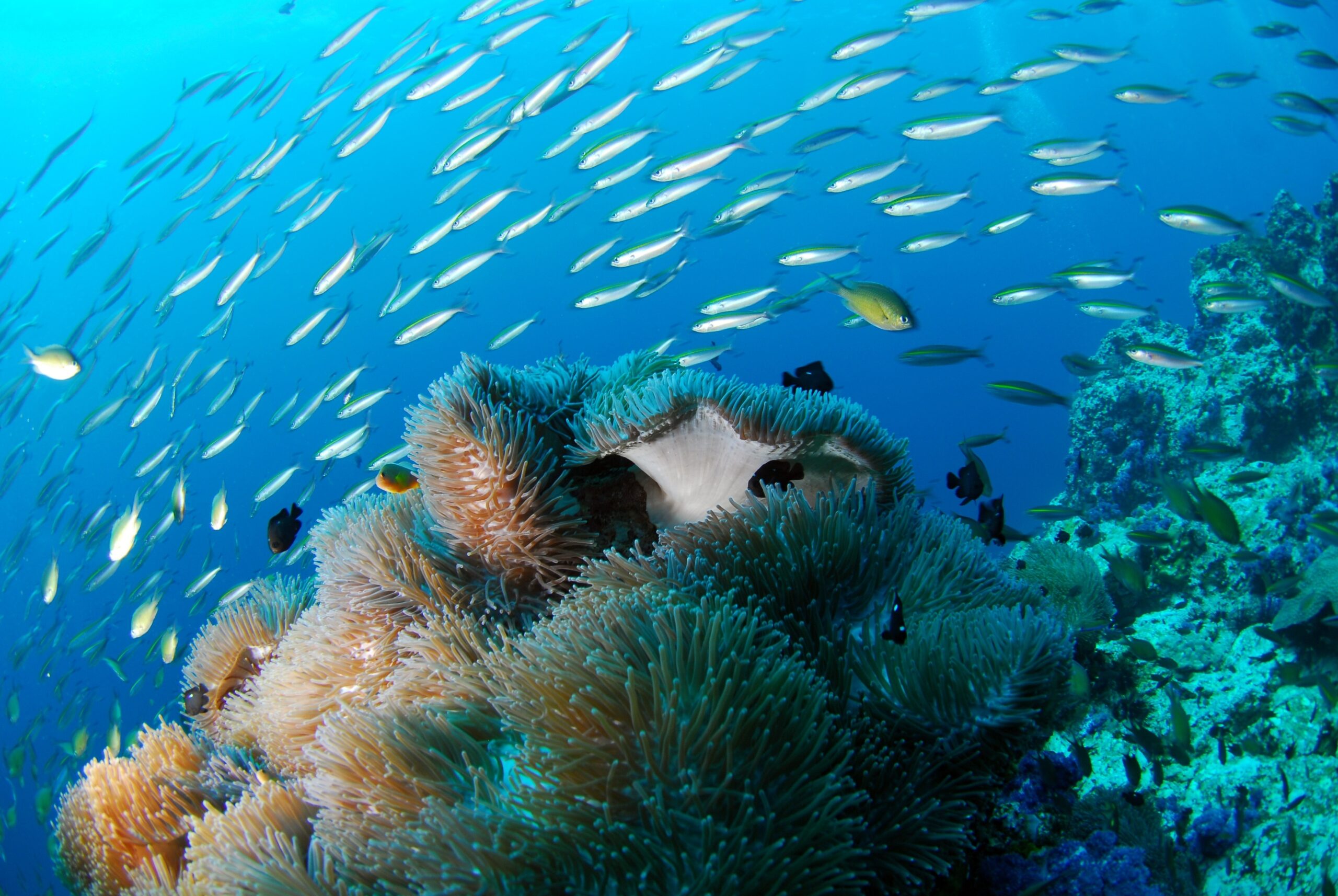
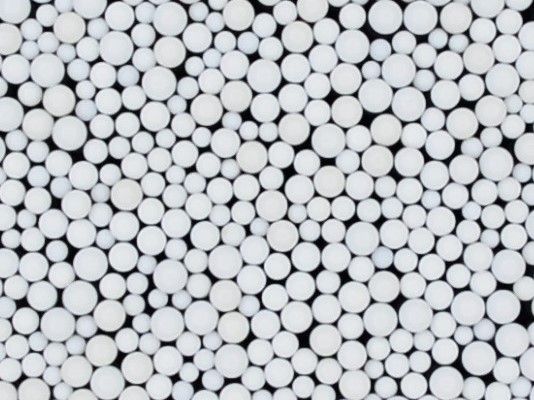
Videos
Learn more about our research by watching videos on YouTube: